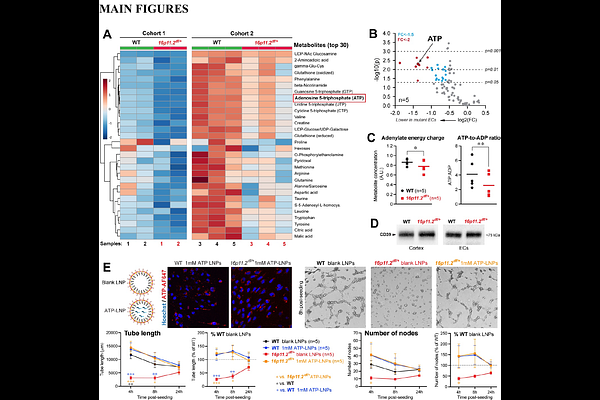Purinergic receptor activation rectifies autism-associated endothelial dysfunction

Purinergic receptor activation rectifies autism-associated endothelial dysfunction
Ouellette, J.; Warsi, S.; Romero, P.; Khare, P.; Naz, S.; Aubert-Tandon, L.; Pileggi, C.; Yandiev, S.; Freitas-Andrade, M.; Comin, C. H.; Harper, M.-E.; Manickam, D. S.; Dabertrand, F.; Saghatelyan, A.; Lacoste, B.
AbstractEarly cerebrovascular alterations affect brain maturation by impacting trophic support and energy supply. Recent evidence in a 16p11.2 deletion mouse model of autism spectrum disorder (ASD) revealed brain endothelial abnormalities postnatally. Yet, the endothelial alterations eliciting these changes remain unknown. Isolation of brain endothelial cells (ECs) from 14-day old male 16p11.2-deficient and wild-type mice revealed that 16p11.2 deletion-induced endothelial dysfunction is linked to a bioenergetic failure, with reduced intracellular ATP. Intra- or extra-cellular ATP supplementation rescued the function of 16p11.2-deficient ECs in vitro via P2 purinergic receptor activation, specifically P2Y2 receptors. Activating P2Y2 receptors restored cerebrovascular reactivity in 16p11.2-deficient parenchymal arterioles ex vivo and rescued 16p11.2 deletion-associated mouse behaviors. Taken together, this study demonstrates that metabolic reprogramming of brain ECs via purinergic receptor engagement represents a possible therapeutic avenue for ASD.